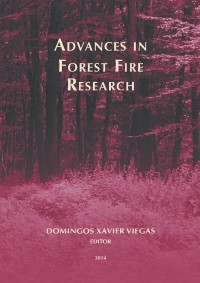Please use this identifier to cite or link to this item:
https://hdl.handle.net/10316.2/34142| DC Field | Value | Language |
|---|---|---|
| dc.contributor.author | Secci, Romina | |
| dc.contributor.author | Canu, Annalisa | |
| dc.contributor.author | Motroni, Andrea | |
| dc.contributor.author | Ventura, Andrea | |
| dc.contributor.author | Uras, Gabriele | |
| dc.date.accessioned | 2014-10-21T14:20:45Z | |
| dc.date.accessioned | 2020-09-09T21:32:06Z | - |
| dc.date.available | 2014-10-21T14:20:45Z | |
| dc.date.available | 2020-09-09T21:32:06Z | - |
| dc.date.issued | 2014 | - |
| dc.identifier.isbn | 978-989-26-0884-6 (PDF) | |
| dc.identifier.uri | https://hdl.handle.net/10316.2/34142 | - |
| dc.description.abstract | Wildfires are one of the most widespread factors of ecosystem degradation around the world. The present note reports the first experimental results of a wider-scale research project, whose aim is to develop methods for the analysis and the collection of field data, by means of a multidisciplinary approach, to evaluate land erosion hazard. The experimental area is located in Mediterranean basin, on a steep slope in a hilly area of north-western Sardinia (Municipality of Ittiri, Italy), where a human caused fire occurred in August 2013. The area is mainly covered by the typical Mediterranean vegetation. The forest fire spread through the study area in August 2013 and the burn severity has been moderate, according to USDA burn severity classification system. After the fire, sediment fences were installed to trap sediments eroded by natural rainfall. Precipitations were recorded using tipping bucket rain gauge installed at the site. Soil erosion rates from experimental plots were measured and estimated with silt fences technique taking into account different slopes and vegetation distribution. The study aims to compare the results obtained by ERMIT (Erosion Risk Management Tool) model application and post-fire sediment yields measured in the study area. The application of the model shows that the area experienced most of erosion after the first rain events after fire occurring. Comparing experimental and model estimated data, there is evidence of ERMiT model overestimating in respect of sampled data for the first year. Future experimental data are needed to confirm this assumption and to contribute to calibrate ERMiT in a Mediterranean typical vegetation and climate environment. | eng |
| dc.language.iso | eng | - |
| dc.publisher | Imprensa da Universidade de Coimbra | por |
| dc.relation.ispartof | http://hdl.handle.net/10316.2/34013 | por |
| dc.rights | open access | - |
| dc.subject | Erosion risk | eng |
| dc.subject | ERMIT | eng |
| dc.subject | Burned area | eng |
| dc.subject | Forest fire effects | eng |
| dc.title | Monitoring erosion risk with ERMIT model: a case study in North Sardinia, Italy | por |
| dc.type | bookPart | por |
| uc.publication.firstPage | 1736 | - |
| uc.publication.lastPage | 1742 | - |
| uc.publication.location | Coimbra | por |
| dc.identifier.doi | 10.14195/978-989-26-0884-6_190 | - |
| uc.publication.section | Chapter 6 – Forest Management | por |
| uc.publication.digCollection | PB | por |
| uc.publication.orderno | 190 | - |
| uc.publication.area | Ciências da Engenharia e Tecnologias | por |
| uc.publication.bookTitle | Advances in forest fire research | - |
| uc.publication.manifest | https://dl.uc.pt/json/iiif/10316.2/34142/211855/manifest?manifest=/json/iiif/10316.2/34142/211855/manifest | - |
| uc.publication.thumbnail | https://dl.uc.pt/retrieve/11177249 | - |
| uc.publication.parentItemId | 53868 | - |
| uc.itemId | 70403 | - |
| item.grantfulltext | open | - |
| item.fulltext | With Fulltext | - |
| Appears in Collections: | Advances in forest fire research | |
Files in This Item:
| File | Description | Size | Format | |
|---|---|---|---|---|
| 978-989-26-0884-6_190.pdf | 1.81 MB | Adobe PDF |  |
Items in DSpace are protected by copyright, with all rights reserved, unless otherwise indicated.
